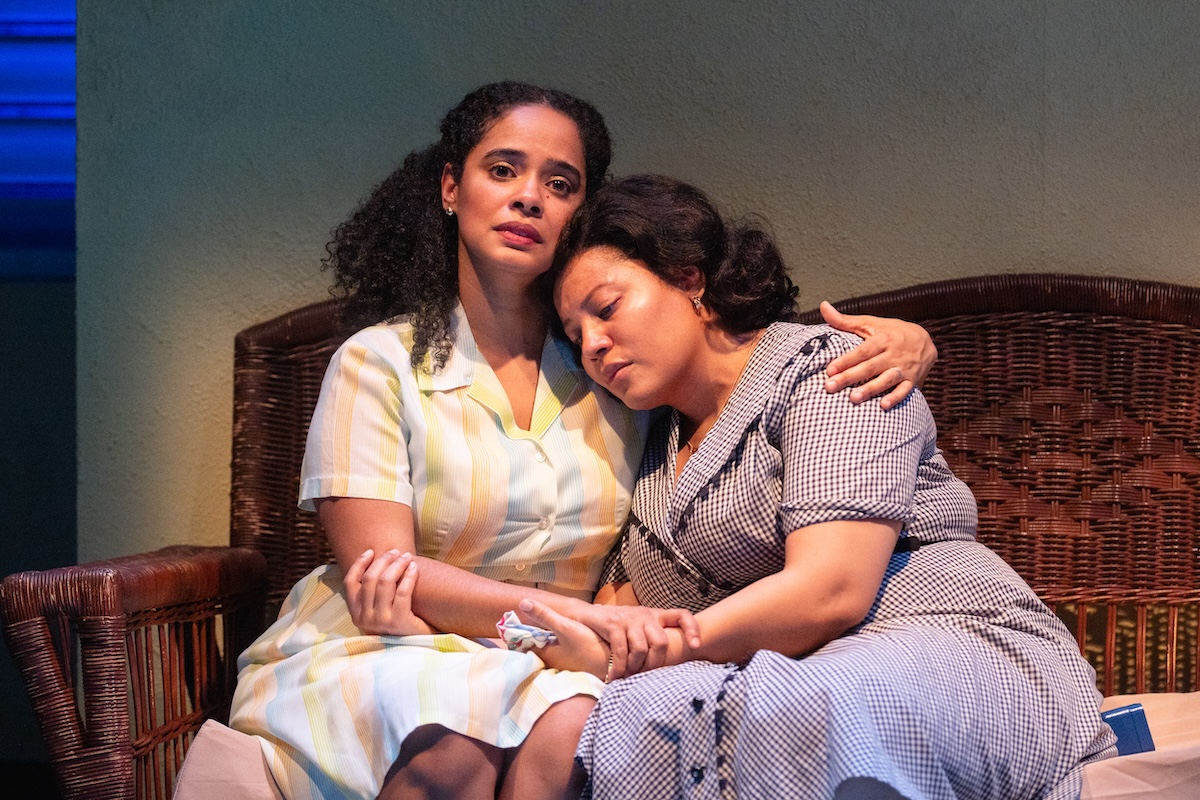How Michael Bennett Created a Thanksgiving Showstopper With "Turkey Lurkey Time"
"After Halloween and Hocus Pocus it's 'Turkey Lurkey Time,'" says dancer Jessica Lee Goldyn. "We have to watch that."
Goldyn, whose Broadway credits include A Chorus Line and the upcoming Hello, Dolly! revival, isn't alone. "Turkey Lurkey Time," the rollicking first-act finale from Burt Bacharach, Hal David, and Neil Simon's Promises, Promises, is one of those numbers that, in the nearly five decades since its 1968 premiere, has reached mythic status in the musical-theater pantheon. It's been referenced on TV's Glee and in the 2003 indie film Camp. YouTube videos of the song's appearance on the 1969 Tony Awards have views in the hundreds of thousands. And somehow, this endurance test of a production number, choreographed by the iconic Michael Bennett (A Chorus Line), manages to double as the quintessential Broadway Thanksgiving song.
Inspired by the Billy Wilder film The Apartment, Promises, Promises tells the story of Chuck Baxter, a junior executive at an insurance company who attempts to climb the corporate ladder by allowing his apartment to be used as a destination for romantic trysts. "Turkey Lurkey Time" comes at the moment where a despondent Chuck (originated by Jerry Orbach and played in a 2010 revival by Sean Hayes) learns that the women he loves, Fran (Jill O'Hara originally, Kristin Chenoweth in the 2010 revival), is actually the mistress of his boss, who has been using Chuck's apartment for dates with her all along. The number serves two purposes in the show: to send the audience into the intermission on a high, and to offset the intense dramatic scene that came before it.
Even though the moment seems to come out of nowhere (with rather nonsensical lyrics to match), the gist of the number is simple: At their office's Christmas party, a trio of tipsy secretaries gather their courage to perform a song and dance about Tom Turkey. Like a lot of great theater songs do, "Turkey Lurkey" started out as a late-in-the-game addition during the out-of-town tryout in Boston, when the creators recognized there were some problems at the end of the first act.
Bob Avian, Bennett's longtime assistant and a choreographer in his on right, explained the purpose of the piece to one of the show's original dancers, Baayork Lee: "Michael had choreographed a number within the style of the show with the three secretaries. It closed the first act of the show. He saw it was not working, so he went to the director, Bob Moore, and spoke to Burt Bacharach, the composer, and told them he felt we needed a musical-comedy number, and he would use the three dancers who were secretaries, Donna McKechnie, Margo Sappington, and Baayork Lee. The number went in just before we left for Washington, and the rest is history."
Lee, who danced the role of the secretary Miss Wong, remembers feeling "thrilled to be taken out of the chorus and be a part of this unbelievable production number." She provided an anatomy of the song's structure for TheaterMania:
"Michael's construction of the number is dealt out in layers. The introduction of the secretaries — the tipsy one, Miss Della Hoya; the overeager one, Miss Wong; and the one who kept us together and, of course was the dance captain, Miss Polanski. You could tell the girls had been working on this routine for a while for the Christmas Party. Their unison choreography with their vocals tells us the story of Tom Turkey. And then, Michael goes all out and features Miss Della Hoya and her iconic solos while the other partygoers start to get involved. Then, the entire stage explodes with movement that has become connected with this dance: heads shaking, hands moving, feet moving, in time with the music."
But it takes a lot of work. "Michael Bennett knows how to construct a number," Lee says. "He gives the audience what it takes to make a number stop the show. It continues till the audiences are out of their seats. How exhilarating for the dancer, and how painful for us as we all sat in the chiropractor's office."
For contemporary dancers like Goldyn, who learned "Turkey Lurkey Time" under McKechnie's choreographic guidance, as much fun as the number was to perform, it didn't come without its challenges. "I didn't expect it to be as difficult to dance as it was," Goldyn says. "It takes such a great deal of stamina. It never stops. It just keeps picking up. By the end, it's like the wind is being knocked out of you. There's not a chance to breathe. I remember literally seeing stars and hitting that button going 'I survived!' Your adrenaline gets you through it. It's a blast to dance it."
"Turkey Lurkey Time" was a must for director Todd Graff to include in Camp, a movie about a plunky group of youths at a performing-arts sleepaway camp. Graff has had vivid memories of the number ever since seeing his sister, Ilene Graff, understudy the role of Fran in Promises, Promises on Broadway. "The number was such a showstopper and so thrilling that it really stuck with me. When I was putting together Camp, it seemed to have all the requirements checked off the list: it was a big dance number, it was hugely entertaining, and it was completely anachronistic for children to perform. That, plus the fact that I always had such a fond, visceral connection to it, is why it went into the movie."
Actress and dancer Megan Sikora, who currently stars in Holiday Inn and was part of the secretary trio in the 2010 revival, had a different "Turkey Lurkey" experience. Director-choreographer Rob Ashford radically reenvisioned the number. "It was the hardest thing I've ever done," Sikora remembers. "We went through a few versions of it at the beginning, but it was difficult to re-create a piece that was so good and memorable, and timeless. So they decided they were just going to smack the audience with energy."
That tactic didn't entirely have the results they desired. "We would be done and heaving offstage, and the audience didn't understand how hard it was because it didn't really build; we were just sprinting from the get-go. But we did our jobs making it look easy." Still, especially in the case of such an iconic number, "The odds were stacked against us from the beginning. Unless we did the original choreography, it was going to be judged. But I enjoyed doing it. I loved that choreography. It was just tricky."
It's still unclear how a song that was originally set during a Christmas party became a Thanksgiving anthem for theater folk. "It's a tabula rasa," Graff says. "It could be about anything." But despite the "virtually nonsensical" lyrics, it's simply designed to be "a great big show-stopping first-act closer."
As Sikora notes, this zaniness is the perfect fit for the holiday season, whether it's Thanksgiving, Christmas, or the period in between. During the holidays, people just want fun and silliness and lightness. Especially right now with what's going on in the world, it'll probably have more hits on YouTube than usual. People just want to smile."










